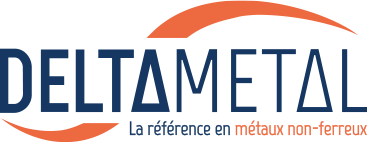-
W
-
Tungstène
-
WOLFRAM
Norms  ASTM B760
ASTM B760
Production technique  Sintered
Sintered
| Chemical composition | Mechanical characteristics | ||||||||||||||||||||||||||||
| W | Other | Rm | A% | HB | Density | Recristallisation temperature |
|||||||||||||||||||||||
| 99,95 | ≤ 0,05 | 800 – 1300 | 2,0-5,0 | 360-500 | 19,3 | 1150 | |||||||||||||||||||||||
Has the highest melting point and the lowest vapor pressure. Excellent material for the vacuum technique and for the related fields. Anticorrosive to many acids, construction of rectifiers, switches and contactors, high temperature furnaces, heating resistors and reflector screens and used for the treatment of nuclear fuel reactor fuels
High-temperature resistance 3420 ° C, spot welding and contacts, electro-erosion, furnaces and ovens under vacuum,
Anti-corrosion
-
Mo
-
Molybdène
Norms  ASTM B386, ASTM B387
ASTM B386, ASTM B387
Production technique  Sintered
Sintered
| Chemical composition | Mechanical characteristics | ||||||||||||||||||||||||||||
| Mo | Other | Rm | Rp | A% | HB | Density | Recristallisation temperature |
||||||||||||||||||||||
| 99,95 | ≤ 0,05 | 590 – 785 | 540 – 620 | 3,0-17 | 300 | 10,22 | 1000 | ||||||||||||||||||||||
High resistance to heat, good electrical conductivity and anticorrosive (acids, chemical agents and molten glass). Molybdenum tools do not require heat treatment or surface treatment before use. High resistance to wear, manufacture of incandescent lamps, transistors and semiconductors, contact for mercury switches and telephone relays, construction of high-temperature furnaces operating under vacuum or under controlled atmosphere.
High-temperature resistance 2620 ° C, Welding by points and contacts, Electro-erosion, Ovens and vacuum ovens, Anti-corrosion, High-conductivity
-
TZM
-
TZM
Production technique  Sintered
Sintered
| Chemical composition | Mechanical characteristics | ||||||||||||||||||||||||||||
| Zr | Mo | Ti | Other | Rm | Rp | A% | HB | Density | Recristallisation temperature |
||||||||||||||||||||
| 0,06-0,12 | Reste | 0,4-0,55 | 0,01-0,04 | 690 – 1130 | 620 – 1000 | 2,0-8,0 | 300-450 | 10,16 | 1250 | ||||||||||||||||||||
Compared to molybdenum, TZM has a higher recrystallization temperature and higher heat resistance. It is therefore a material which is perfectly suitable for producing tools which must have a particularly high heat resistance. The use of TZM is preferable to molybdenum for the assembled parts because it is better suited for welding.
Under pressure moulding, Vacuum furnaces, Boats for firing and sintering techniques at temperatures above 1500 ° C
-
TA6V ELI
-
Titane TA6V ELI
-
Grade 23
Norms  AMS 4907, AMS 4930, AMS 4956, ASTM B-337, ASTM F 136-92, ISO 5832
AMS 4907, AMS 4930, AMS 4956, ASTM B-337, ASTM F 136-92, ISO 5832
Production technique  Drawn, Rolled
Drawn, Rolled
| Chemical composition | Mechanical characteristics | ||||||||||||||||||||||||||||
| Al | Fe | Ti | V | Other | Rm | Rp | A% | HB | Density | W/m.k IACS |
|||||||||||||||||||
| 5,5-6,5 | ≤ 0,25 | Reste | 3,5-4,5 | ≤ 0,273 | ≥ 980 | ≥ 900 | ≥ 17 | 315 | 4,43 | 7,3 | |||||||||||||||||||
The ELA (Extra Low Intersticials) grade of TA6V was developed to improve toughness and ductility at very low temperatures. Biocompatible. Recommended in seawater under stress. Fairly good weldability. Forging ability.
Engine and structural parts with strong toughness. Surgical Implants.
-
TAN
-
Tantale
Norms  ASTM B708-98, ASTM B365-98, ASTM B521-98
ASTM B708-98, ASTM B365-98, ASTM B521-98
| Chemical composition | Mechanical characteristics | ||||||||||||||||||||||||||||
| Ta | Other | Rm | Rp | A% | HB | Density | W/m.k IACS |
Recristallisation temperature |
|||||||||||||||||||||
| 99,95 | ≤ 0,05 | 285 | 170 | 30 | 200 | 16,65 | 13 | 900 – 1400 | |||||||||||||||||||||
Refractory materials having very good corrosion resistance properties. Very ductile. Good thermal and electrical conductivity
High-temperature resistance 2620 ° C, Welding by points and contacts, Electro-erosion, Ovens and vacuum ovens, Anti-corrosion, High-conductivity
